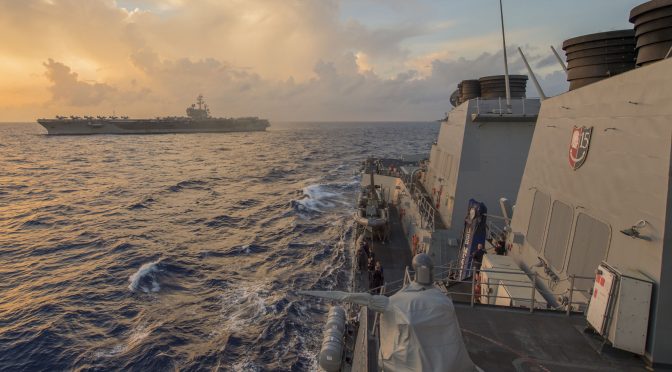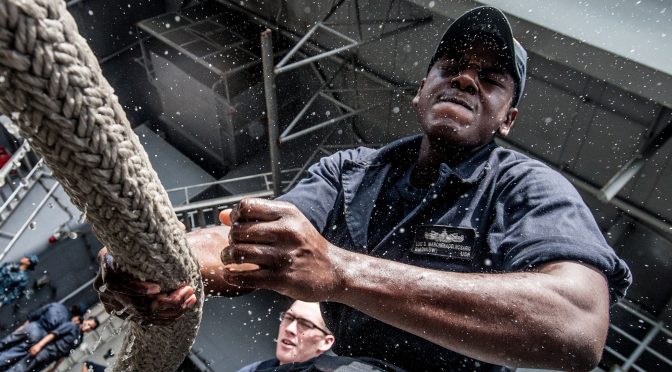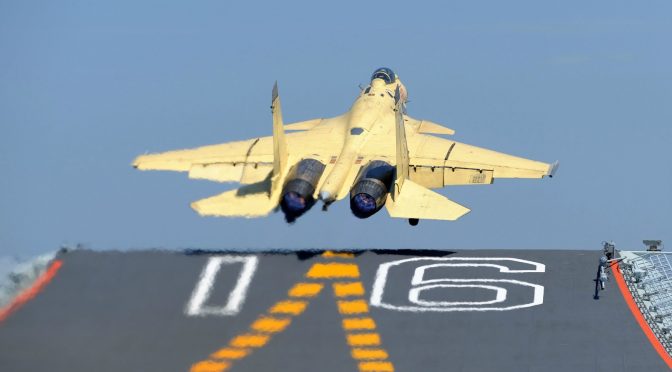By Anonymous
Seek Navy Input. The Navy is a limited resource that is most effective when given clear policies and permissive rules of engagement (ROE) and when allowed to have a strong voice in the decisions and policies governing its deployment.
Change the U.S. Maritime Strategy. There is an opportunity to change the maritime strategy in a way that cannot be measured in numbers of ships alone. Rather, the new administration should consider the U.S. Navy to be an asset that can fight the U.S. “4+1” potential opponents (China, Russia, Iran, North Korea, and violent extremism), especially for control of narrow seas.
Counter Terrorism. This will initially be a priority for the new administration and if the Navy is to play a role in gaining the respect of navies around the world, some rebalancing of the force may be required. The Naval Postgraduate School and CNA are excellent sources of advice on how best to reorganize the Navy to provide offensive as well as defensive capabilities to serve U.S. interests.
China is the most likely foe. The PLA is able to integrate surface, subsurface, and aerial warfare into strong defense against seaborne threats. The U.S. should maintain the same capability while investing in smaller ships that can patrol and protect borders with increasing speed.
Increase the diversity of the Navy. There should be greater recruitment of minorities and women, with an emphasis on their development, mentorship, and retention.
Recognize that the Navy is a source of innovation. The continued service (albeit temporary) of Deputy Defense Secretary Bob Work is a good sign the new administration is taking a forward-looking approach to naval technological capabilities.
Featured Image: SOUTH CHINA SEA (July 13, 2016) Sailors aboard the guided-missile destroyer USS McCampbell (DDG 85) observe as the aircraft carrier USS Ronald Reagan (CVN 76) conducts routine flight operations. (U.S. Navy photo by Mass Communication Specialist 3rd Class Elesia K. Patten/Released)




